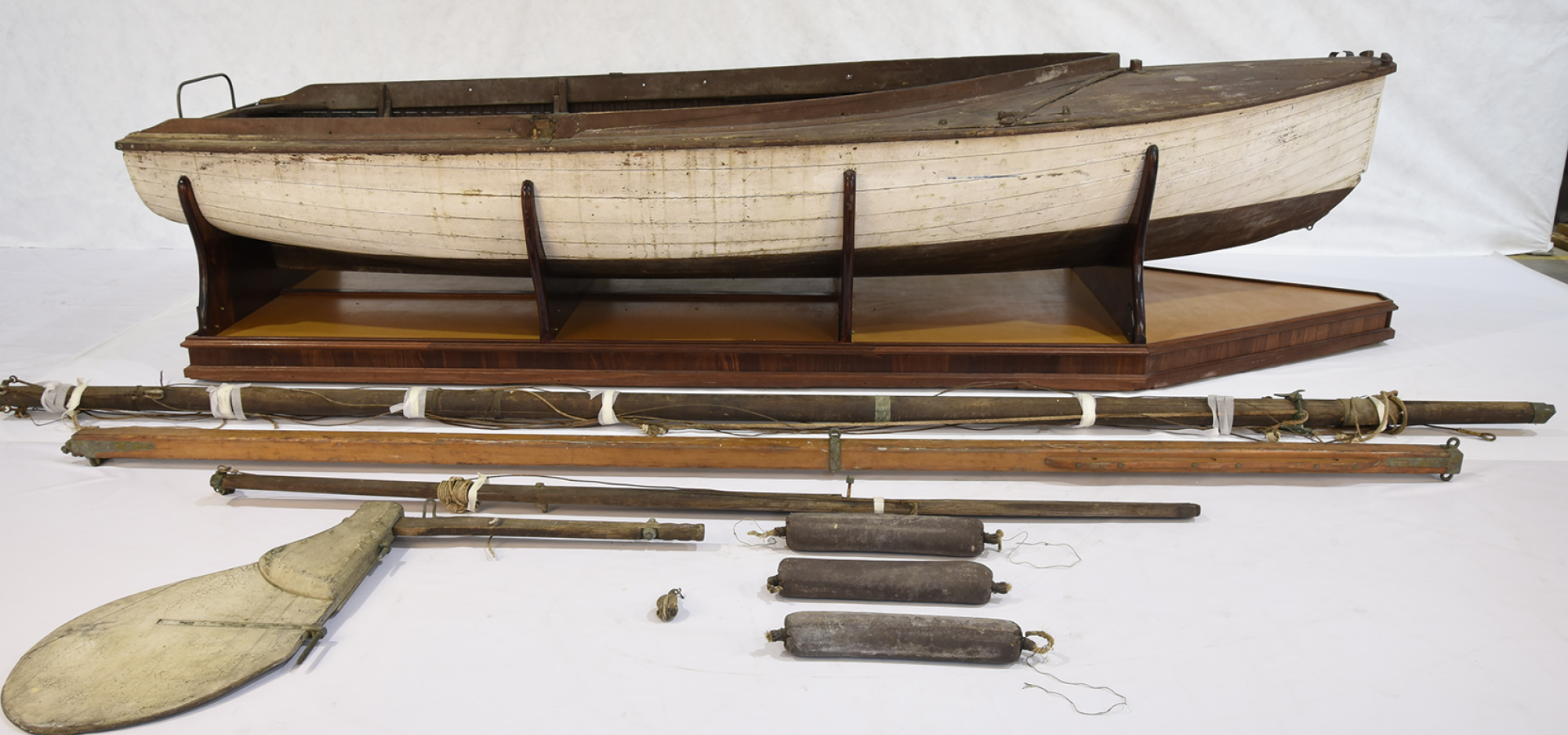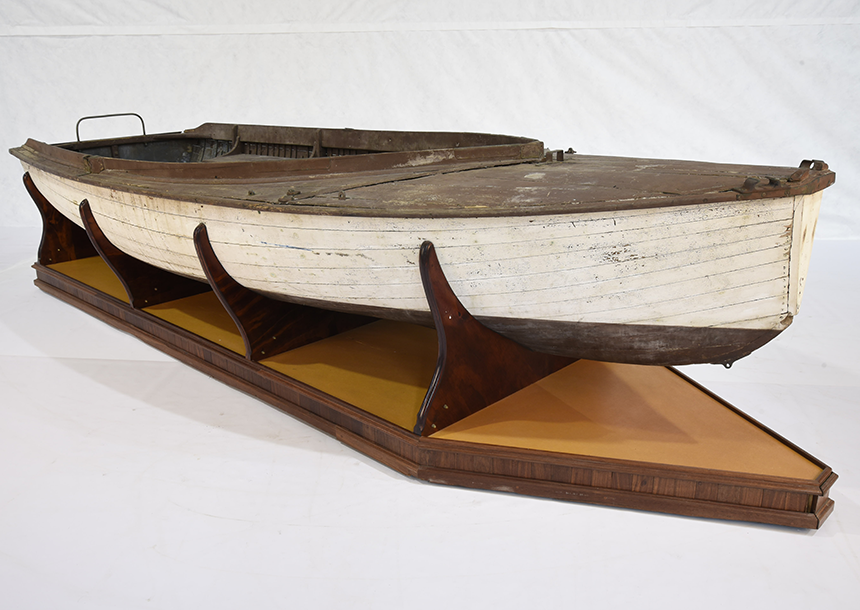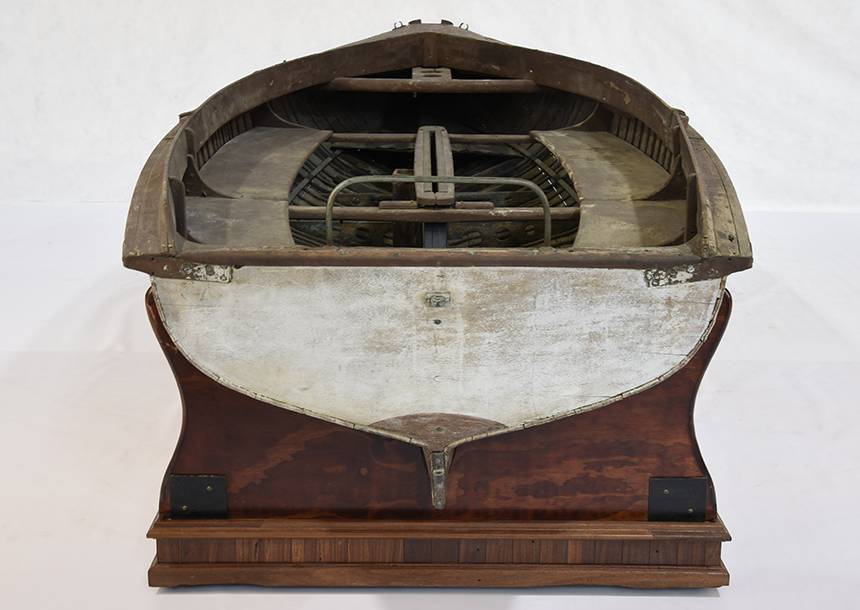Name of vessel
Endeavour
Date built
1928
Builder
Don Felton
Designer
Charlie Peel
Previous owner(s)
Bill Bevan, Thorold Julian, Skip Foley, Doug Foley, Betty Major
Vessel type
14-foot snub-nose sailing dinghy
Dimensions
L 14.2ft (4.3m) x W 5.6ft (1.7m) x H 2.8ft (0.85m)
Registration number
HB 66_END
Significance
Endeavour is a 14-foot snub-nose sailing dinghy that was built in 1928 by Don Felton. It is an example of a significant design evolution in racing dinghies in Australia during the early twentieth century.
The snub-nose dinghy was developed in Melbourne during the 1910-11 race season by prominent Victorian designer Charlie Peel. He sought to create a boat that was not only smaller but would be more seaworthy and remain light and able to be crewed by two.
Despite its smaller crew, 14-foot dinghies such as Endeavour could carry large gaff rigs, which would improve race performance.
In January 1931, Endeavour, along with White Cloud and Miss Perth, were selected to represent WA in the Australian 14-foot championship on the Swan River.


